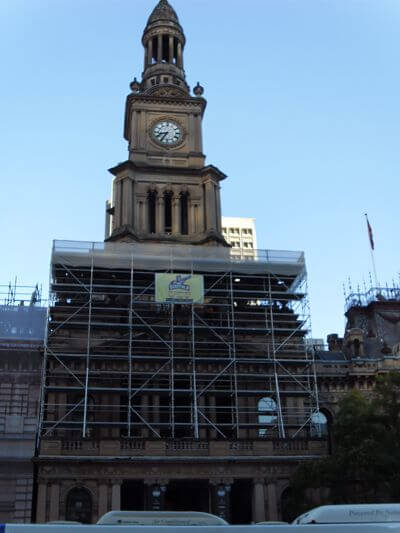One of the biggest advantages of Aluminium Scaffolding over it’s steel cousins is the fact that it is lightweight. For jobs where weight is an issue such as when working on roofs this is where lightweight Aluminium Scaffolding comes into it’s own.
Don’t be fooled though, just because Aluminium Scaffolding is lightweight does not make it a lightweight. With our light duty range of EASYSCAF having a safe working load of 225kg’s and our Pro Series medium duty range of SUPASCAF and LOCKSCAF having a safe working load of 450kg’s our Aluminium Scaffolding is up to the toughest of jobs.
The Aluminium advantage is in its inherent low weight while maintaining a high capacity to bear load. Less weight means:
- Lower transport costs – size of vehicle and fuel required.
- Lower labour costs for manoeuvring on site – manpower, crane costs, safety/lifting incidents are minimised.
- Lower labour costs for erection and dismantling – Aluminium scaffolding goes up very quickly.
- Lower impact on unprepared ground or surrounding soil with lighter vehicles etc.
Comparing Aluminium and Steel Scaffolding Solutions for a Simulated Build
| Aluminium | Steel |
|---|---|
|
|
Most people find that portability alone gives Aluminium scaffolding the advantage. The extra benefits with safety, handling and flexibility make it the material of choice.
When you consider longevity of your scaffolding, remember this – if you inadvertently scratch aluminium, it forms a protective oxidised layer that preserves the inner core. Mr Scaffold uses T6-6061 Alloy in the construction of our scaffold, and this alloy has been proven to maintain it’s strength when abraded. If you scratch steel it will rust, progressively weakening the metal. Rust is more apparent in wet conditions, and rust can bleed – discolouring building surfaces or ground coverings.
Each type of scaffold has different capabilities and they can be used in conjunction with a good scaffolding plan. An example is the featured image, where Mr Scaffold used Aluminium scaffold to provide a working platform over the fragile roof area of Sydney Town Hall, whilst Steel Scaffold was used to support the installation of Steel Beams to strengthen the Heritage structure.

